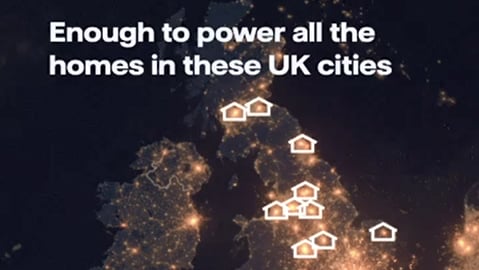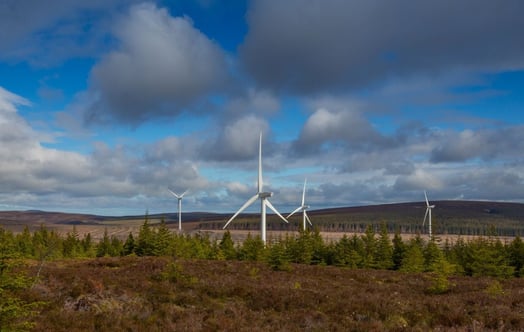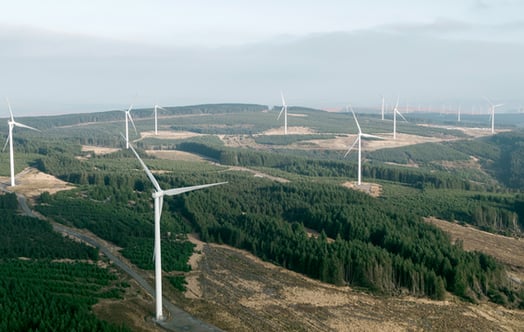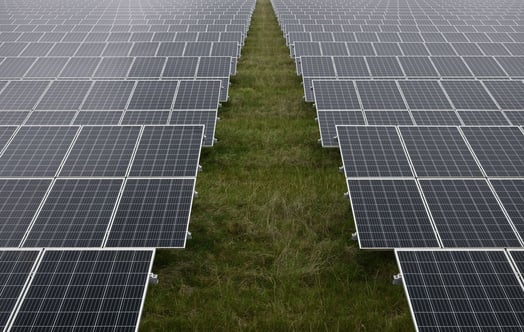
Offshore Wind Sector Deal gives backbone to fossil-free UK
Danielle Lane, Vattenfall’s UK Country Manager, blogs on the deal between the industry and government
Today (7 March, 2019) the UK government and the offshore wind industry published the Offshore Wind Sector Deal. The Sector Deal sets out a plan to deploy at least 30GW of fossil-free offshore wind generation capacity by 2030. A key objective of the Sector Deal is to secure 60% of UK business content, supported by a £250m industry fund to increase productivity and foster innovation. The Sector Deal also underlines the importance of a diverse and skilled workforce to deliver targets. Danielle Lane, Vattenfall’s UK Country Manager explains why the Sector Deal is so important.
Video player requires marketing cookies.
To view this content please click here to allow marketing cookies.
Offshore wind will be the backbone of a carbon neutral, climate friendly UK economy. It will be critical to enabling smart, reliable and affordable production and consumption of electricity in our homes and businesses, the heat we need and the journeys we take.
The Offshore Wind Sector Deal, agreed between the industry and the UK government – details are released today - sets out that opportunity and underlines the importance of ensuring that the UK economy sees the benefit of its Clean Growth Strategy.
Already though, the UK offshore wind industry is world-leading and making a big contribution, the Sector Deal should help us keep that lead.
In the past 12 months the offshore wind sector generated around 25TWh of fossil free power, its 7GW of capacity meeting the electricity needs of more than 20% of UK households. Due to the decarbonisation of transport, heat and industry, demand for electricity could grow by up to a fifth, eventually reversing current efficiency-driven downward trends. That demand must be met by low-carbon generators if climate change objectives are to be met. As the electricity industry shifts to fossil-free forms of generation, it’s clear that offshore wind will play a crucial role in delivering the UK’s Clean Growth Strategy by delivering up to a third of UK demand by 2030.
Video player requires marketing cookies.
To view this content please click here to allow marketing cookies.
The Sector Deal sets out why the industry’s growth will be good for the UK economy too. Our experience investing over £3.5bn in the UK since 2008 confirms that potential. Independent analysis shows that our investment and ongoing expenditure in offshore wind has added £1.1bn value to the British economy and has supported on average every year 910 jobs across the country.
If our 4GW offshore wind pipeline of new projects, off the Norfolk and Kent coasts, are built in the 2020s we will build on that positive investment story by creating a diverse, long-term workforce involving thousands of people, in construction and operation.
The Sector Deal is designed to deliver significant UK economic benefit whether it’s through high levels of business opportunity for UK firms or developing the skills we need from a diverse workforce. In 2017, according to RenewableUK, 48% of expenditure in offshore wind went to UK firms from offshore wind. The Sector Deal expects this to grow. By 2030, to hit at least 30GW installed offshore wind capacity, £48bn will be invested by developers. The Sector Deal targets 60% of that investment going to the UK supply chain.
There will be a growing workforce too. Last year, Energy & Utility Skills set out the challenges and opportunities of building an offshore wind workforce that will help develop, build, and maintain around 35GW of capacity by 2032. In 2018, around 11,000 people worked in offshore wind. This is set to increase to 36,000 by 2032 if the upper end of the industry’s ambitions is realised. The Sector Deal wants a third of these workers to be women, up from 16% today. Meanwhile, the UK is short of 20,000 engineering graduates every year. You can see the challenge. It must be tackled urgently.
It takes around ten years to start generating power from a large offshore wind, so the policy framework we work in today, combined with the Sector Deal’s vision, will determine the scale of the industry in ten years’ time.
As offshore wind reaches its potential, the fossil-fuel free heat and electric transport sectors can be confident that there will be enough supply to meet the needs of their customers. According to National Grid’s 2018 Future Energy Scenarios report, there could be 11 million electric vehicles on the road by 2030, and 60% of homes will have a heat pump by 2050.
The availability of large amounts of carbon-neutral electricity in the coming decades, with a crucial contribution from offshore wind, is one of the reasons why Vattenfall is investing in a UK energy solutions business which will offer low and zero-carbon heating networks and electric vehicle charging infrastructure and customer service.
Other industry players are making the same move in transport and heat. We would only do so if we were confident that offshore wind’s backbone was strong and getting stronger. A virtuous cycle if there ever was one.





